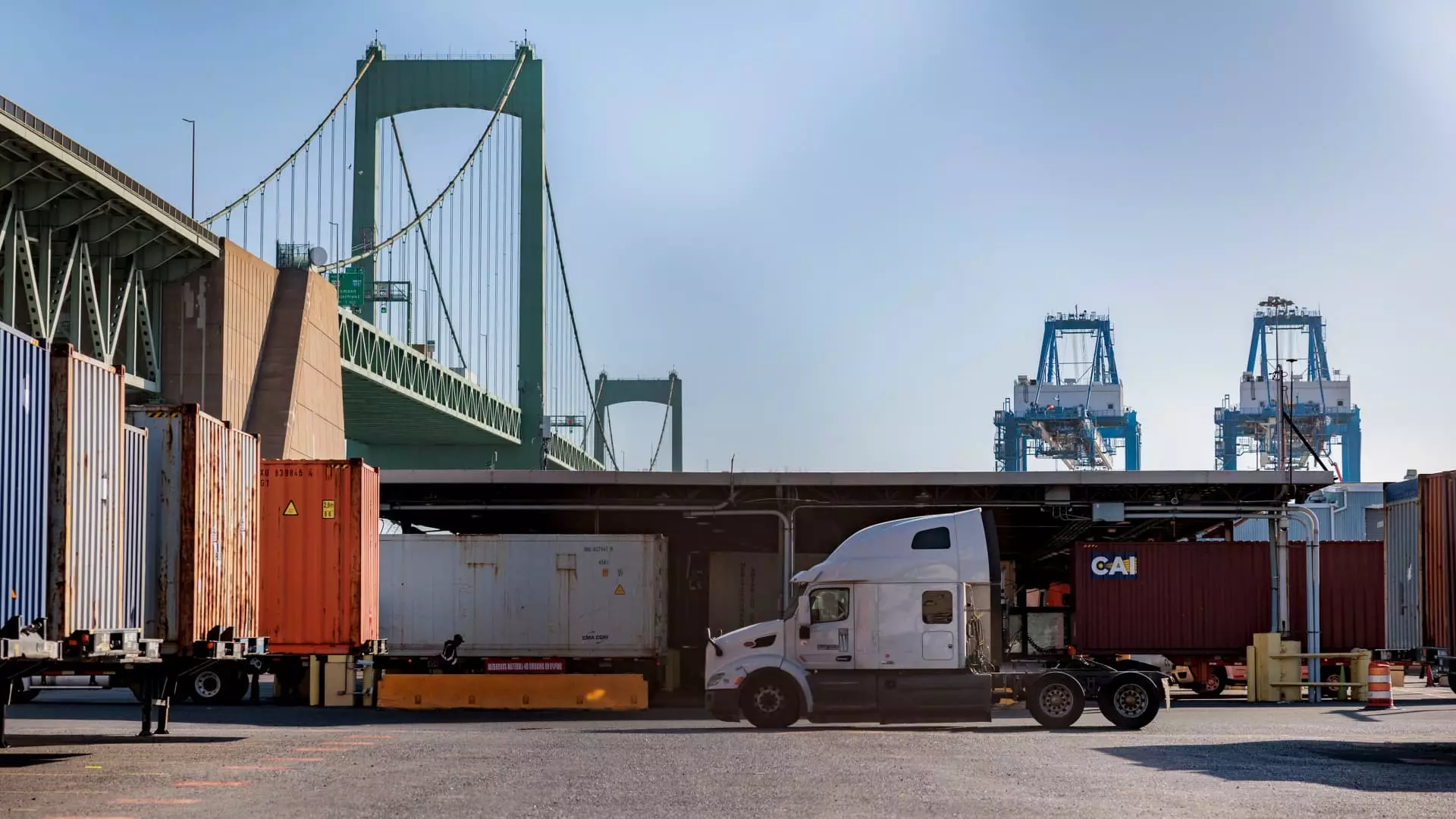The imposition of tariffs on imported goods has become a hallmark of Donald Trump’s economic policy agenda. This radical approach raised eyebrows, especially when Trump suggested that a reliance on tariffs could potentially eliminate the federal income tax altogether. While this concept may appear appealing at face value, an in-depth analysis reveals serious flaws in its practicality and sustainability, casting doubts on the feasibility of such an economic policy shift.
Historically, tariffs were a significant source of revenue for the federal government during the 19th century, when government spending was considerably lower compared to today’s economy. Alex Durante, a senior economist at the Tax Foundation, points out the drastic change in U.S. fiscal needs, highlighting that current spending levels equate to over 22% of the country’s GDP. This percentage starkly contrasts with the minimal government expenditure during the 1800s, raising fundamental questions about the appropriateness of a tariff-based revenue system in the 21st century.
Despite the historical context, tariffs are currently a minor component of federal revenue. For example, in fiscal year 2024, the U.S. Customs and Border Protection reported approximately $77 billion collected from tariffs, which only accounted for about 1.57% of total federal revenue. This paltry figure raises red flags about the viability of tariffs as a primary revenue source to replace the income tax while maintaining modern governmental financial obligations.
Economic experts, including Erica York, vice president of federal tax policy with the Tax Foundation, emphasize that the mathematics underpinning Trump’s proposal simply do not add up. For the tax year 2021, the IRS collected approximately $2.2 trillion from individual income tax payers. To supplant this immense amount solely through tariffs would necessitate astronomically high rates. York asserts that such high tariffs could lead to adverse consequences, as they would likely be met with strong consumer resistance and would shrink the tax base, undermining the initial goal of tax revenue generation.
Compounding these challenges, experts like Kimberly Clausing and Maurice Obstfeld, who contributed to a report from the Peterson Institute for International Economics, suggest that implementing such extreme tariff rates would inevitably reduce import volumes. In an ironic twist, as tariffs increase, the very foundation they rely upon for revenue would begin to erode, making the ambitious target of $2 trillion unrealistic.
Furthermore, the dynamics of consumer behavior present significant risks to the proposed tariff system. Higher tariffs lead consumers to modify their purchasing habits, potentially reducing demand for imported goods. This shift could further jeopardize the revenue generated from tariffs, resulting in a feedback loop that further constrains the government’s financial capacity.
Moreover, retaliation from trading partners cannot be overlooked. Following Trump’s initial tariff impositions, countries such as China quickly responded with their own tariffs on U.S. imports. This tit-for-tat approach threatens to escalate into a broader trade war, ultimately harming the U.S. economy more than it helps. The uncertain economic landscape could frighten consumers and investors alike, stifling growth and leading to deeper financial repercussions.
The precarious approach of replacing income tax with tariffs is fraught with pitfalls and uncertainties. The historical context of tariffs as a revenue strategy is outdated in today’s economy, where government spending demands far outstrip what a tariff-based system could feasibly provide.
Ultimately, experts widely agree that such radical policies, while theoretically enticing, lack any semblance of practicality in execution. As the global economy continues to evolve, U.S. economic policies must adapt and innovate beyond simplistic ideas. The pursuit of a balanced and sustainable tax system remains crucial for ensuring long-term economic stability in a rapidly changing world.

